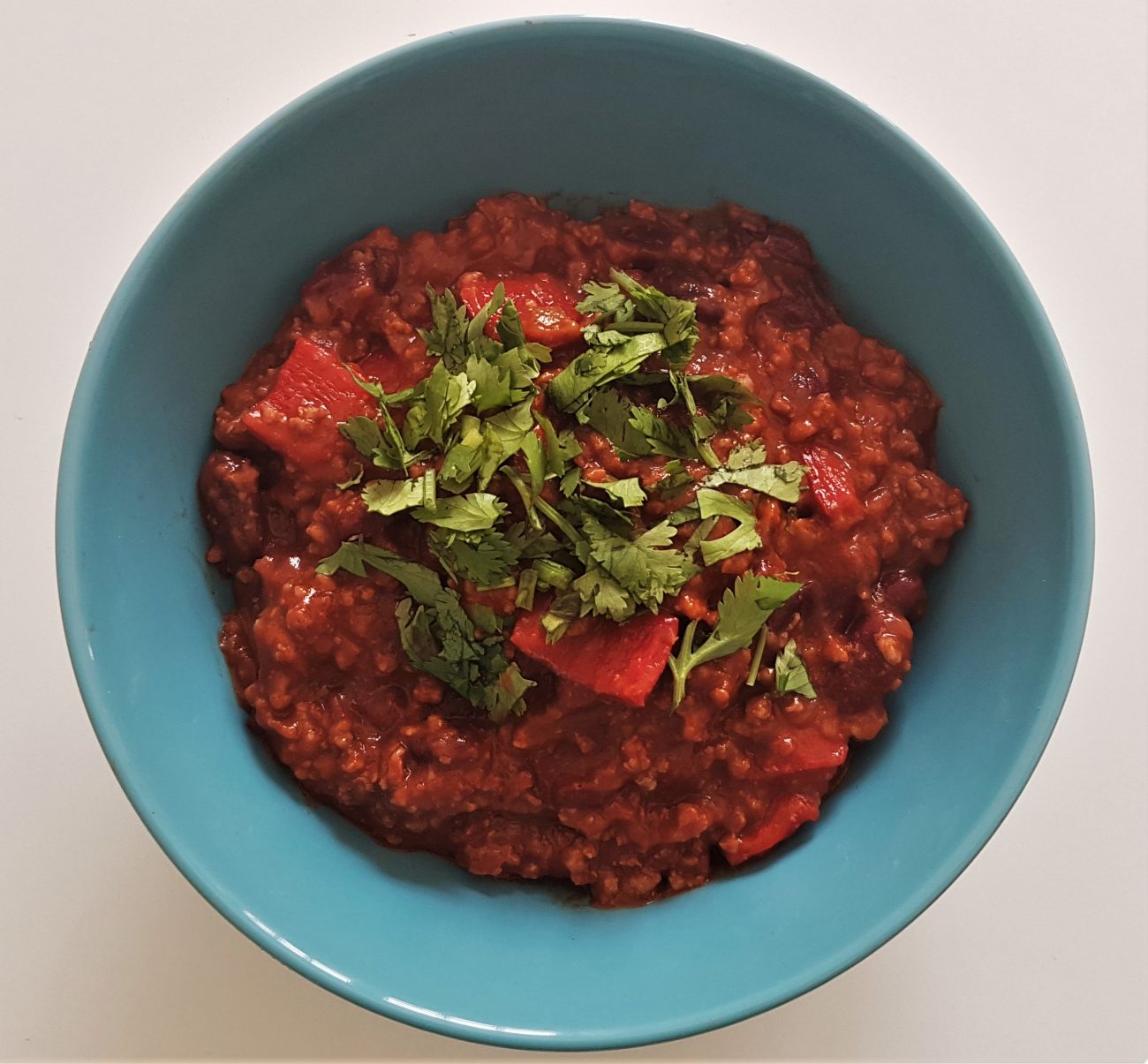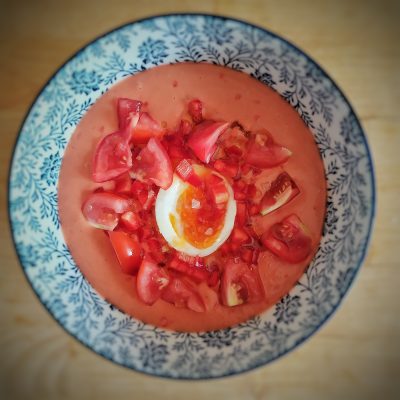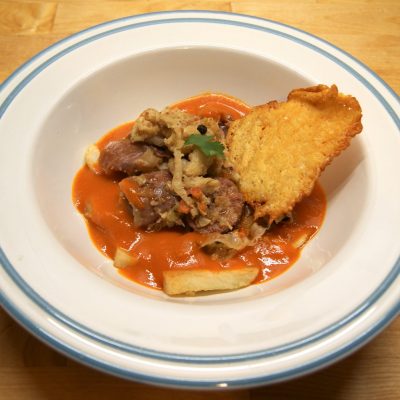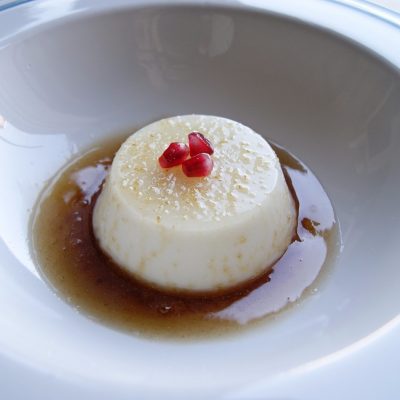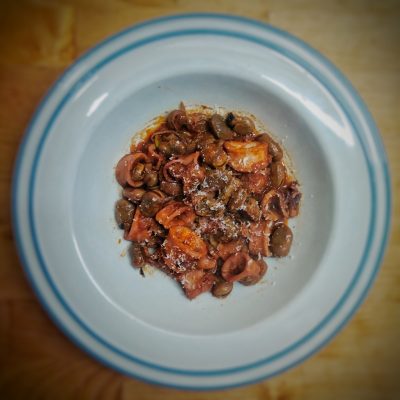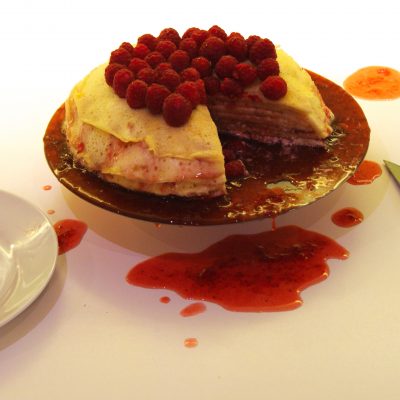Ingredients
-
600g Ground Beef
-
2 medium sized Red Pepper
-
2 cans Red Beansof standard 400g cans
-
700g Tomato Sauce1 bottle of passata
-
2 Onion
-
6 cloves Garlic
-
A bunch of Coriandercilantro
-
2 tbsp Sweet Paprika powder
-
1 tsp Chilli powder
-
1 tsp Oregano
-
1 tbsp Cocoa powdersweetened one
-
2 Beef Stock Cube
-
Optionals:
-
to taste Dried Chilli
-
to taste Chilli Pepper
Directions
A spicy stew containing chili peppers, ground (or finely chopped) meat, and often tomatoes and beans originated in Texas, in mid 19th century, by Texan adventurers and cowboys as a staple for hard times when traveling to and in the California gold fields and around Texas. Needing hot grub, the trail cooks came up with a sort of stew. They pounded dried beef, fat, pepper, salt, and the chili peppers together into stackable rectangles which could be easily rehydrated with boiling water. This amounted to “brick chili” or “chili bricks” that could be boiled in pots along the trail. There were similar dishes made by other groups of people in the same area and also neighboring Mexico, but this version was the most popular one. It became so popular and loved among Texans that it became the official “state food” of Texas in 1977.
It is hard to say what is “the real” Chilli today as there are many versions of the dish (Texas Red, Springfield-Style, Cincinnati Five-Way Chilli, Chasen’s Chilli, …) and everyone likes to make their own version. Moreover, there is a dispute over ingredients that go into a Chilli, specially over beans and tomatoes which were not used in early versions of the dish. But that’s also the beauty of it. You can personalize it the way you like it. Here I present the version I am making in the Surf Camp, where this Chilli is my favorite dish.
Note on spiciness:
Instead of using just chili powder you can use whole dried chilies, and fresh chilies alongside peppers to achieve more complex flavor and spiciness. You could make it not spicy at all by not using chilies, but then the name of the dish would make no sense.
References:
Steps
|
1
Done
|
Dice the onion and finely chop coriander stalks. Saute both in a few tablespoons of vegetable oil over medium heat. Make sure that onion doesn't brown. |
|
2
Done
|
When the onion is softened add garlic paste (use garlic crusher or grate it), diced peppers, sweet paprika, chili powder, and other forms of spiciness (if you want). Saute everything for a minute or two. |
|
3
Done
|
Add half of the meat to the pot, and turn up the heat to the max. Use a wooden spoon or a spatula to mix and break the meat into pieces as small as possible. During this process meat will release water which needs to evaporate to achieve browning of the meat. After a bit of browning add the rest of the meat and repeat the process. If you scale the amount of ingredient, adjust the number of batches as well. |
|
4
Done
|
When you are satisfied with the amount of browning, turn the heat down to low and add the tomato sauce (passata di pomodoro). Scrape the bottom of the pan to incorporate every little caramelized piece. Cook on the low heat for 2 to 3 hours with occasional stirring to prevent sticking to the bottom of the pot and potential burning. |
|
5
Done
|
During cooking add oregano, half of the beef stock cubes, and half of the cocoa powder. Stir well, let it cook for a while and taste it. Add a bit of a beef stock cube if it needs salt, and cocoa powder if it needs sugar or it's too acidic. Repeat the process until desired saltiness and sweetness. |
|
6
Done
|
Half an hour before the end of cooking add beans, previously drained and washed from canning liquid. |
|
7
Done
|
Serve with long grained rice, sour cream, and finely chopped coriander. Or some rustic bread. Or tortilla chips. Or fresh tortillas. Or basically anything you fancy eating it with. |

